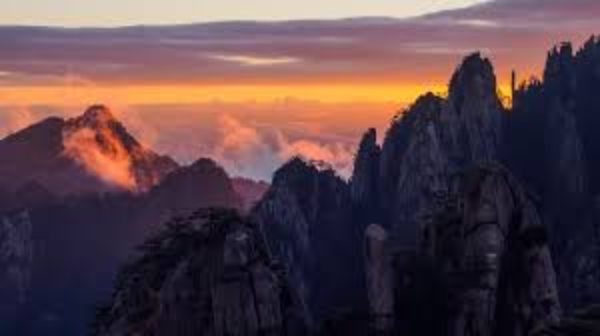
Capturing the Sunset Spectacle at Huangshan's Bright Summit: A Complete Guide
Mastering the Art of Sunset Photography at Huangshan's Bright Summit
Perched high above the clouds, Huangshan's Bright Summit (Gwangmingding) offers an unparalleled vantage point to witness the fiery drama of a sunset over a sea of granite peaks. This guide equips you with the essential techniques and knowledge to capture breathtaking sunset photographs at this iconic location.
Planning Your Photographic Expedition
Understanding the Golden Hours
- Timing is Key: Arrive at least an hour before sunset to scout locations and set up your gear.
- Sunrise vs. Sunset: While both offer magical light, sunsets at Bright Summit are renowned for vibrant hues and dramatic cloud formations.
- Weather Wisdom: Clear or partially cloudy skies are ideal. Check weather forecasts and embrace the unpredictable nature of mountain weather.
Essential Gear Checklist
- Camera System: A DSLR or mirrorless camera with manual controls is recommended.
- Lenses: A wide-angle lens (16-35mm) captures the grandeur, while a telephoto lens (70-200mm) isolates details.
- Tripod: Essential for sharp images, especially in low light.
- Filters: A graduated neutral density (GND) filter balances the bright sky with the darker foreground. A polarizing filter enhances colors and reduces glare.
- Extra Batteries and Memory Cards: The cold and extended shooting sessions demand ample power and storage.
Composition Techniques for Dramatic Results
Leading Lines and Natural Frames
- Granite Ridges: Use the mountain's natural contours to guide the viewer's eye towards the setting sun.
- Ancient Pine Trees: Frame your shots with the iconic silhouettes of Huangshan's twisted pines.
Rule of Thirds and Negative Space
- Balanced Harmony: Position the horizon according to the rule of thirds for a pleasing composition.
- Sky's the Limit: Leave ample negative space to emphasize the vastness of the sky and the grandeur of the sunset.
Mastering Light and Exposure
Shooting in Manual Mode (M)
- Aperture Priority (Av or A) for Depth of Field Control: Use a smaller aperture (f/8 to f/16) for a wider depth of field, ensuring sharpness throughout the scene.
- Shutter Speed Priority (Tv or S) for Creative Effects: Experiment with slower shutter speeds to capture the movement of clouds or create a starburst effect from the sun.
White Balance and Color Temperature
- Daylight or Cloudy Presets: Enhance the warm tones of the sunset.
- Shooting in RAW Format: Allows for greater flexibility in adjusting white balance during post-processing.
Post-Processing Tips for Stunning Results
Enhancing Colors and Contrast
- Subtle Adjustments: Avoid over-saturation; aim for natural-looking enhancements.
- Graduated Filters and Adjustment Brushes: Fine-tune specific areas of the image to balance exposure and highlight details.
FAQs
Q: What is the best time of year to photograph sunsets at Bright Summit? A: Spring and autumn offer the most favorable weather conditions with clear skies.
Q: Are there any accommodation options near Bright Summit? A: Yes, there are hotels located on the mountaintop, allowing you to stay close to the action.
Q: Is it safe to hike around Bright Summit during sunset? A: Exercise caution, stay on marked paths, and be mindful of the changing light conditions.